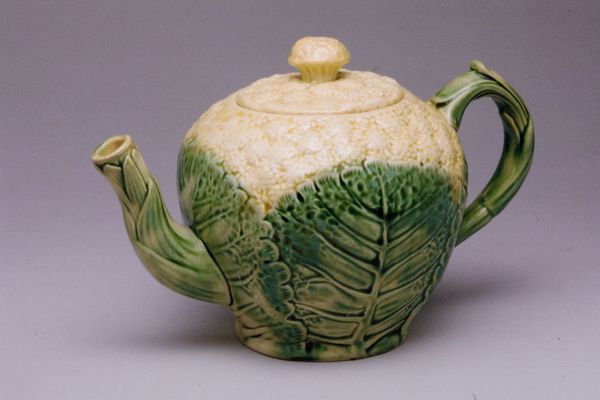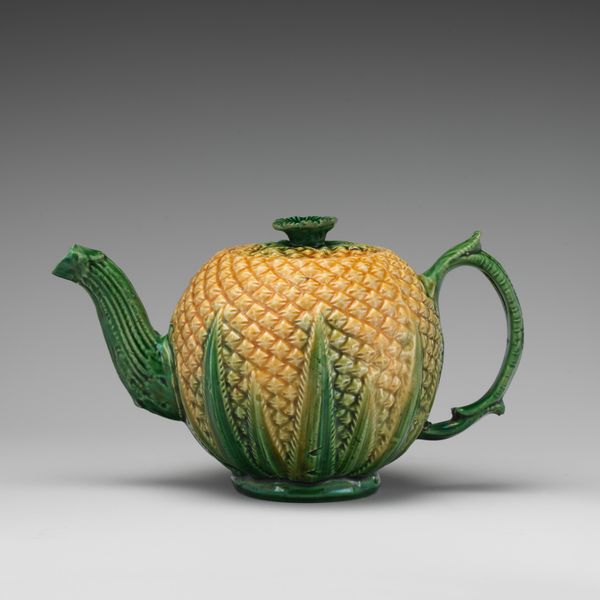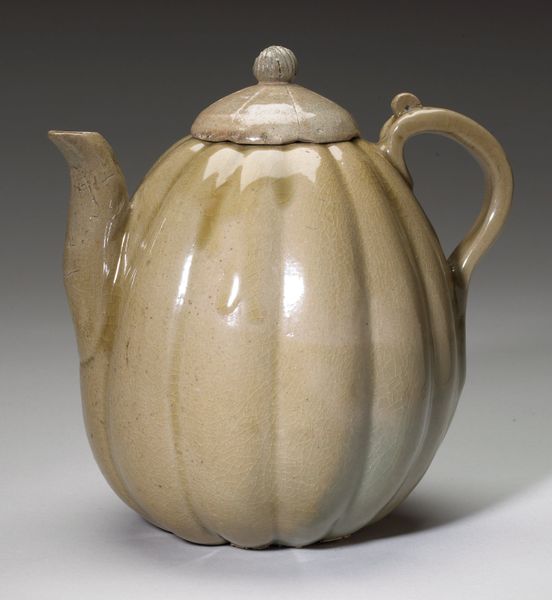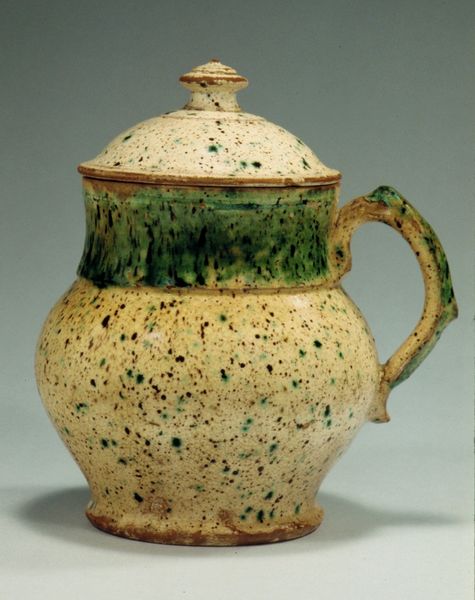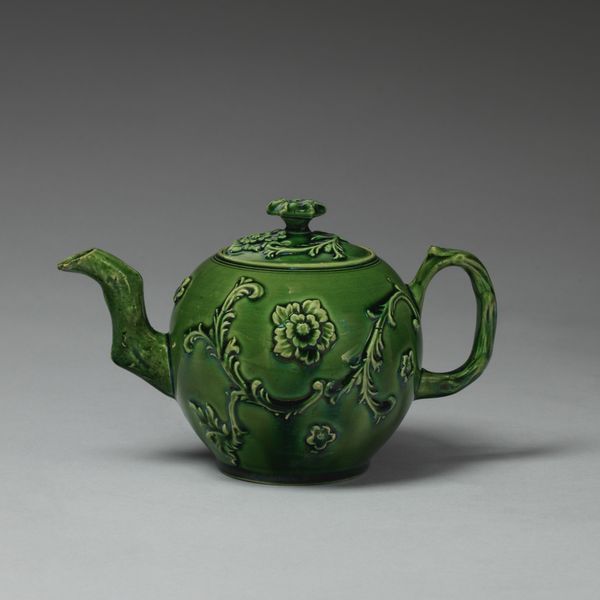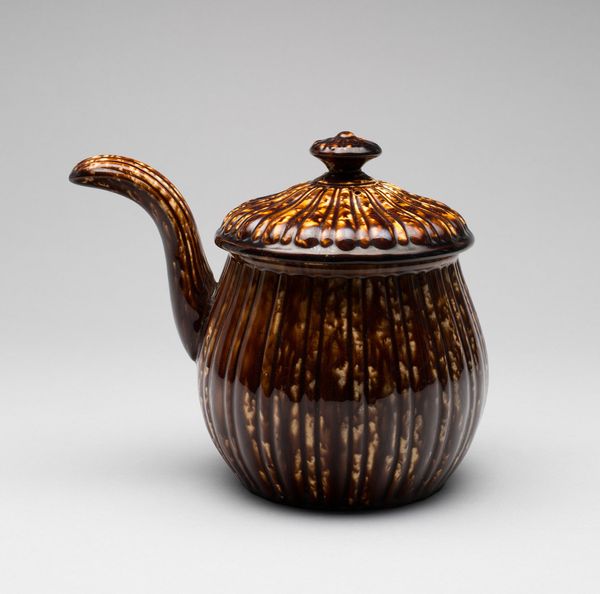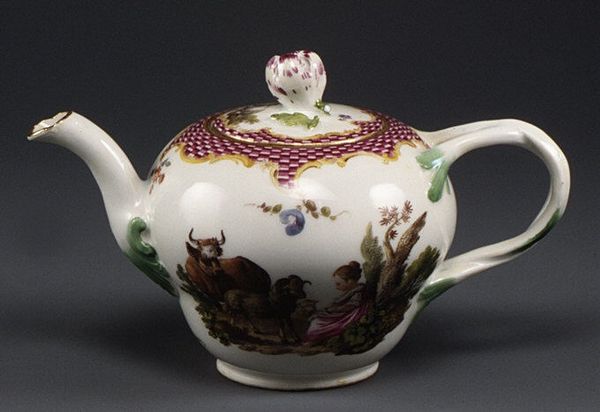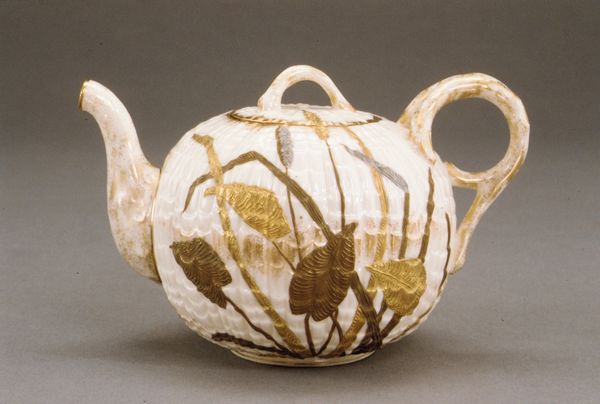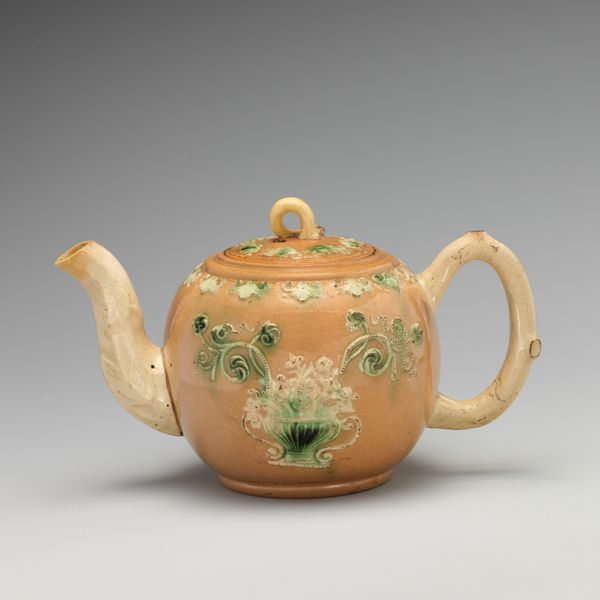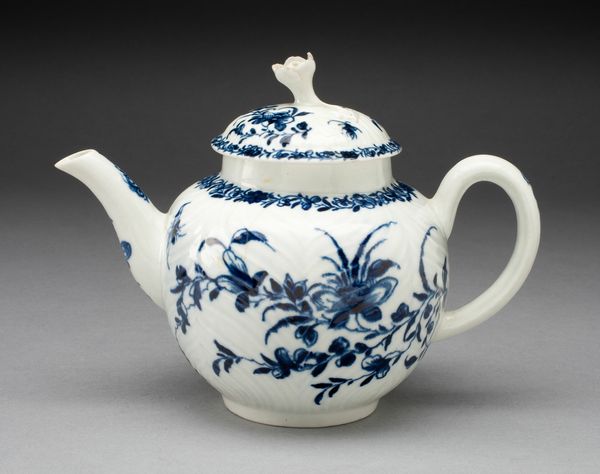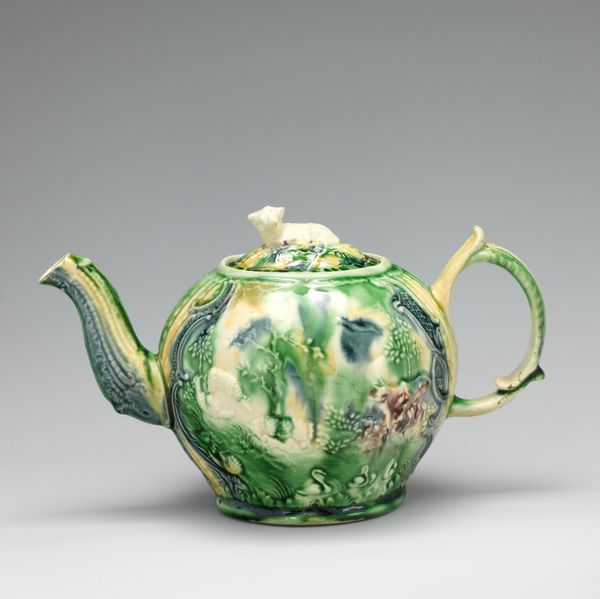
ceramic, earthenware
#
ceramic
#
earthenware
#
decorative-art
Dimensions: 5 7/16 x 7 5/8 in. (13.8 x 19.4 cm)
Copyright: Public Domain
This majolica teapot, made by Griffen, Smith and Hill in Pennsylvania between 1880 and 1889, embodies the exuberant aesthetics of the Gilded Age. But it also reflects the social and economic transformations of the time. The pineapple motif, rendered in vibrant green and yellow glazes, evokes luxury and hospitality. Pineapples were luxury goods, symbols of colonial trade and transatlantic exchange. The firm of Griffen, Smith and Hill was one of many potteries catering to the growing American middle class that sought to emulate the lifestyles of the wealthy. The rise of industrial production and consumer culture allowed for the mass production of decorative objects like this teapot, but these objects often blurred the lines between art and industry. By studying the company records, design catalogs, and period advertising we can better understand the cultural aspirations embodied in this playful piece of ceramic art.
Comments
No comments
Be the first to comment and join the conversation on the ultimate creative platform.
